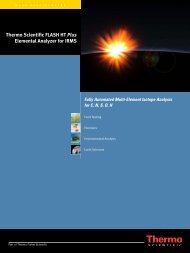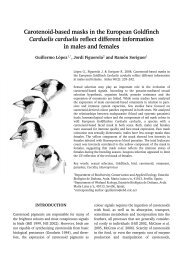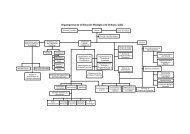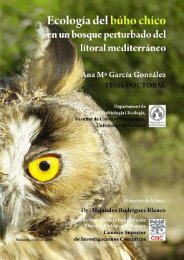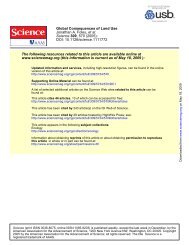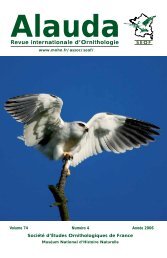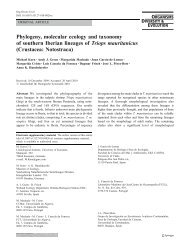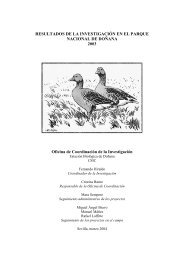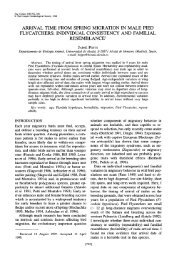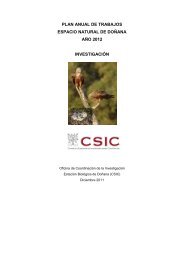Voucher Specimen Collection Preparation Identification and Storage ...
Voucher Specimen Collection Preparation Identification and Storage ...
Voucher Specimen Collection Preparation Identification and Storage ...
You also want an ePaper? Increase the reach of your titles
YUMPU automatically turns print PDFs into web optimized ePapers that Google loves.
1.2.6 Marine Mammals<br />
Marine mammals are covered under the Canada Fisheries Act <strong>and</strong> are the responsibility of<br />
the Department of Fisheries <strong>and</strong> Oceans. Marine mammals are not addressed in this manual.<br />
1.3 Health Hazards<br />
Inventory personnel must be aware of health hazards associated with working with wild<br />
animals <strong>and</strong> chemicals used for preserving specimens. Ford <strong>and</strong> Tesch (1993) discuss some<br />
of these concerns. Although it is beyond the scope of this manual to cover these health<br />
hazards, below are some common sense precautions:<br />
• familiarize yourself with the disease hazards in the area <strong>and</strong> the animals that carry them<br />
• inquire about needed vaccinations<br />
• take care to avoid being bitten or scratched by wild animals<br />
• know how to clean up spills <strong>and</strong> treat for any chemicals that you use<br />
• wear protective gear <strong>and</strong> disinfect equipment as needed<br />
• immediately wash <strong>and</strong> treat cuts<br />
1.4 Special Training<br />
All personnel including project managers, crew leaders <strong>and</strong> any other persons who are<br />
independently collecting data on a provincially-funded species inventory project must have<br />
successfully completed the training course “Introduction to Wildlife Inventory” that is based<br />
on the Species Inventory Fundamentals manual (No. 1). This course, along with other<br />
species inventory courses, are offered through the British Columbia Forestry Continuing<br />
Studies Network (FCSN).<br />
The Chemical Immobilization of Wildlife training course is also required by any biologist<br />
who will be using chemical means to restrain wildlife. This course has been developed by the<br />
Canadian Association of Zoo <strong>and</strong> Wildlife Veterinarians.<br />
6 June 9, 1999



